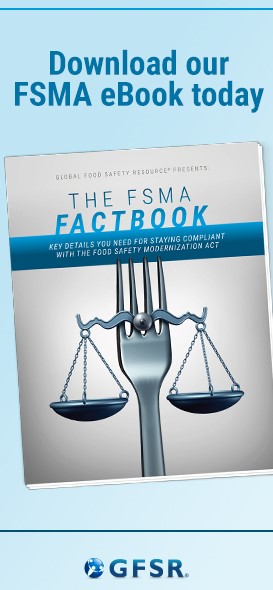Food Safety Through the Eyes of the Consumer: What Does That Mean for You?

Food safety is a shared responsibility that includes the consumer notes tomato processor Bill Thomas in this blog for GFSR. See what that means for you!
What does “Food Safety Through the Eyes of the Consumer” Mean for You? That was the question food processor William Thomas posed at the 12th Annual North American Summit on Food Safety in Toronto recently. Thomas is CEO of Thomas Canning (Maidstone) Ltd., a tomato processing company located in Ontario, Canada. His company is the first and largest processor of canned organic and climate-smart tomato products in Canada, and his products are sold around the world.
“The public is increasingly attentive to and informed about the food supply system,” he noted. “And definitions of safety do not necessarily involve microbiological threats that have immediate consequences to the consumer’s life. Instead, they often invoke long-term health effects.”
Thomas emphasized how important it is for us all to focus consistently on relieving consumer concerns over the safety and authenticity of food products while staying abreast of changes in food safety regulations. He shared 10 compelling “Food Safety Facts That Impact” from the World Health Organization that should motivate us all to pay more attention:
- More than 200 diseases are spread through food, and millions of people fall ill every year
- Contaminated food can cause long-term health problems
- Foodborne diseases affect vulnerable people harder than other groups
- There are many opportunities for food contamination to take place throughout the food web
- Globalization makes food safety more complex and essential
- Food safety is multisectoral and multidisciplinary
- Food contamination also affects the economy and society as a whole
- Antimicrobial resistant bacteria in animals may be transmitted to humans through food
- Food safety is a shared responsibility, everybody has a role in keeping food safe
- Consumers must be well informed on food safety practices
Thomas also pointed out that there are cultural differences in the food preferences of different audiences that affect many facets of a food company’s relationship to its customers. “Everything is interconnected today,” he said, noting that when a company has a recall, it affects the entire industry and even the economy of the country in which that company operates. “The consumerization of food safety would be a good thing,” he says.
Until that happens, Thomas had some suggestions for becoming more sensitive and responsive to consumer concern for food safety:
- Solicit feedback from your consumer base
- Expand your definition of food safety
- Ensure the highest safety standard for your food products
- Better align your food protection practices with consumer expectations
“Food safety is a shared responsibility that includes the consumer,” he says. “People need to be as well-informed as possible.”
About the Author
Susan Crossman is GFSR’s Managing Editor. If you have an idea for an article or blog you would like GFSR to include in future, please email her at [email protected] or call her at 1-888-437-7395.

Categories: Food Safety
Tags: Food Safety , Food Supply System , Foodborne diseases , World Health Organization



